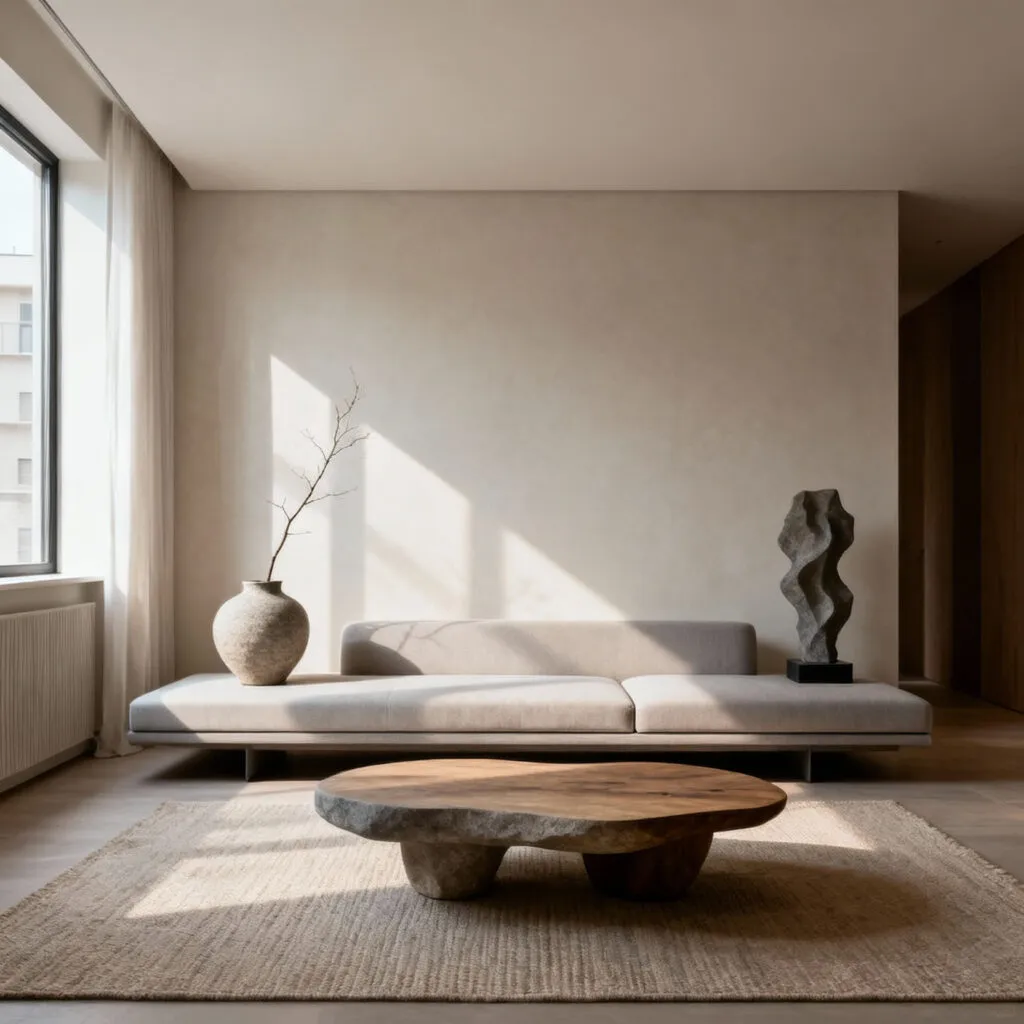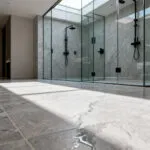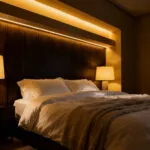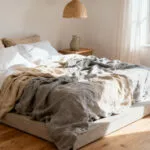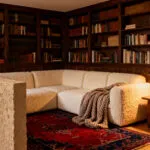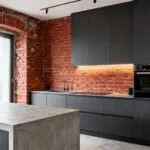The most meticulously designed living rooms I’ve seen—the ones that feel impossibly calm and spacious—are the result of a surprising truth. The designer likely spent only 20% of their time on what you’d call “decorating.” After years of designing custom cabinetry and organization systems, I’ve pinpointed the hidden framework they all use. It isn’t about having a secret source for furniture or an unlimited budget. It’s about implementing a systematic approach that treats decor not as a finishing touch, but as the final layer of a highly functional system.
Most people approach decorating with a kind of chaotic optimism, buying pieces they love and hoping they’ll work. But in an apartment, this almost always leads to a beautifully cluttered mess. Without a system, your space can’t function as a sanctuary. These 20 strategic elements are my system, broken down into manageable steps. They teach you to think like a professional organizer and a designer, ensuring every single choice supports the core function and flow of your space. Let’s build a living room that truly works.
Essential Apartment Living Room Decor Fundamentals (Part 1)
Before a single throw pillow is considered, we must establish the blueprint. This first section covers the non-negotiable fundamentals. Think of this as pouring the foundation—get this right, and everything else falls into place with an almost startling ease. We’re creating order from the ground up.
1. Defining Your Aesthetic Core: The Power of a Singular Vision
Every successful design project begins with a mission statement. This isn’t just about picking a style like “mid-century modern.” It’s about defining the feeling you want the room to evoke. Start with three adjectives: are you aiming for “serene, airy, and organic” or “dramatic, cozy, and textured”? This core vision becomes your filter for every subsequent decision, preventing the kind of design creep that results in a room full of beautiful things that don’t speak to each other.
Once you have your words, you can create a focused visual library—not just a sprawling Pinterest board, but a curated collection of 10-15 images that perfectly capture that feeling. In my storage solutions expert practice, I call this “establishing the rules of engagement” for your space. If an item doesn’t align with your aesthetic core, it doesn’t get past the front door. This disciplined approach is the difference between a collection of furniture and a truly cohesive living environment.
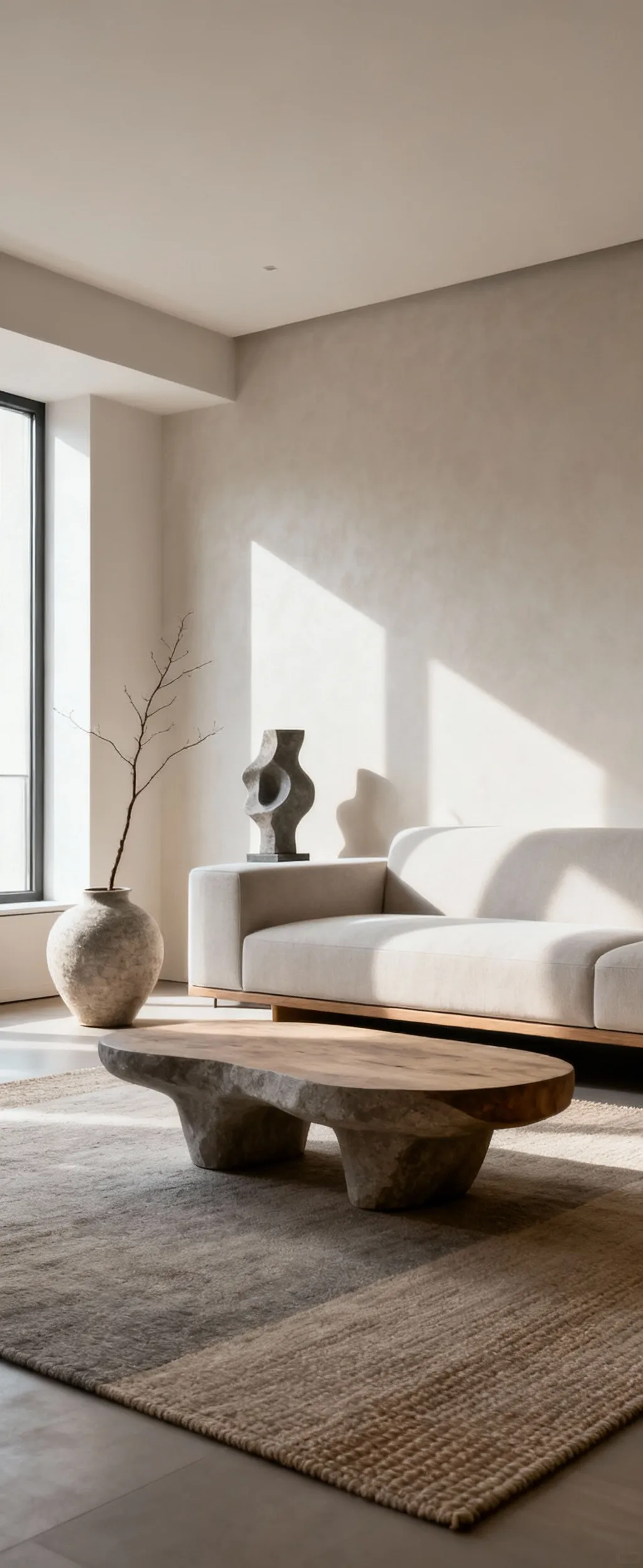
2. Mastering Multi-functional Furnishings: Maximizing Small Footprints
In an apartment, every piece of furniture must earn its keep. There’s simply no room for single-task items. The most obvious examples are storage ottomans or coffee tables with drawers, and they are a great start. But the real art is finding pieces that solve problems you didn’t even know you had. Think nesting tables that can deploy as needed for guests, or a sleek console table that doubles as a minimalist workspace.
I’ve noticed what truly gets me is when function is so seamlessly integrated it’s almost invisible. Years of professional experience taught me to look for hidden value. That beautiful bench under the window? It’s not just seating; it’s the home for your collection of board games. That deep armchair has a clever lift-up seat for blanket storage. This isn’t about compromise; it’s about demanding more from your furniture, ensuring your apartment living room decor is as intelligent as it is stylish.
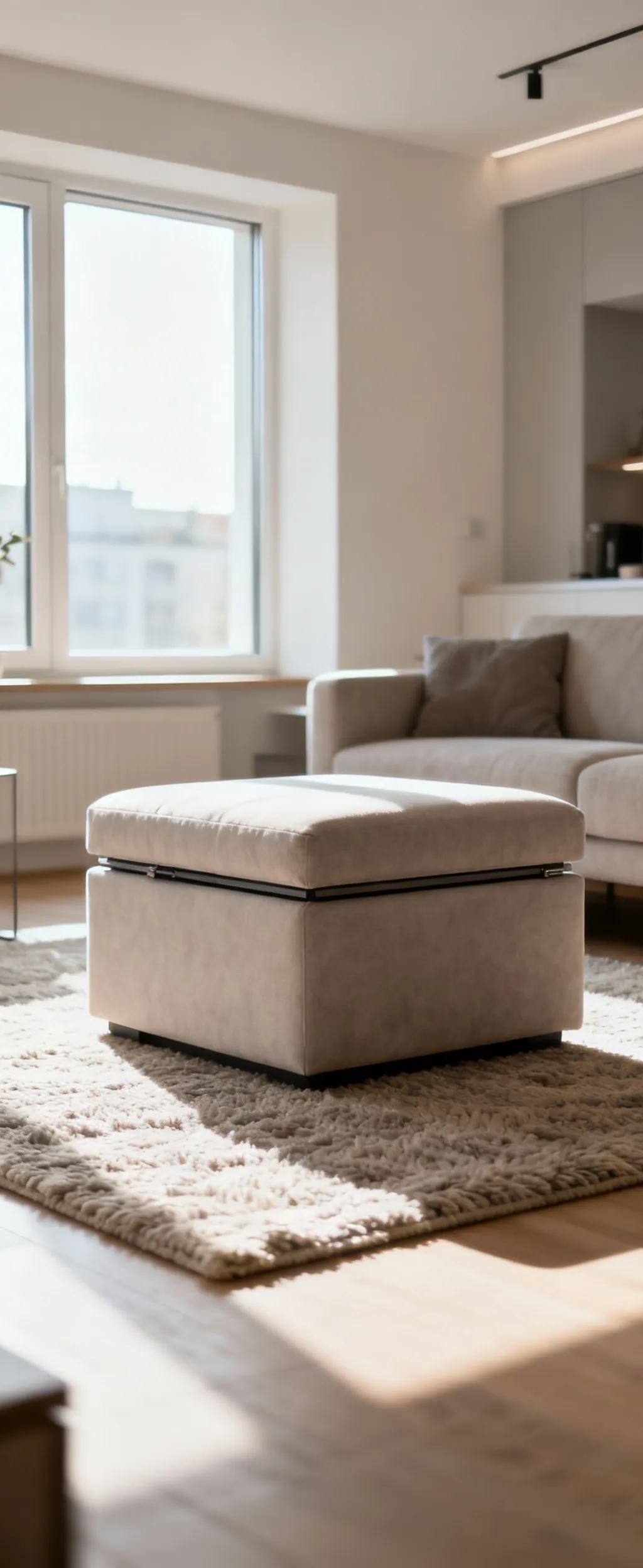
3. Strategic Vertical Space Utilization: Expanding Visual Real Estate Upward
The biggest mistake people make in small apartments is thinking only in terms of floor space. Your walls are your greatest untapped asset. The simplest step is adding floating shelves, but to truly transform the space, you need to think architecturally. Tall, slender bookcases draw the eye upward, creating an illusion of height and grandeur that a low-slung media unit never could.
Wall-mounted cabinets are a game-changer—they offer enclosed, clutter-free storage without occupying a single inch of the floor. From my work in custom cabinetry, I learned that a floor-to-ceiling unit can actually make a room feel larger because it creates a clean, uninterrupted vertical line. Don’t be afraid to go high. Hang your curtain rods a few inches below the ceiling, not right above the window frame. It’s a classic trick for a reason: it works every time.
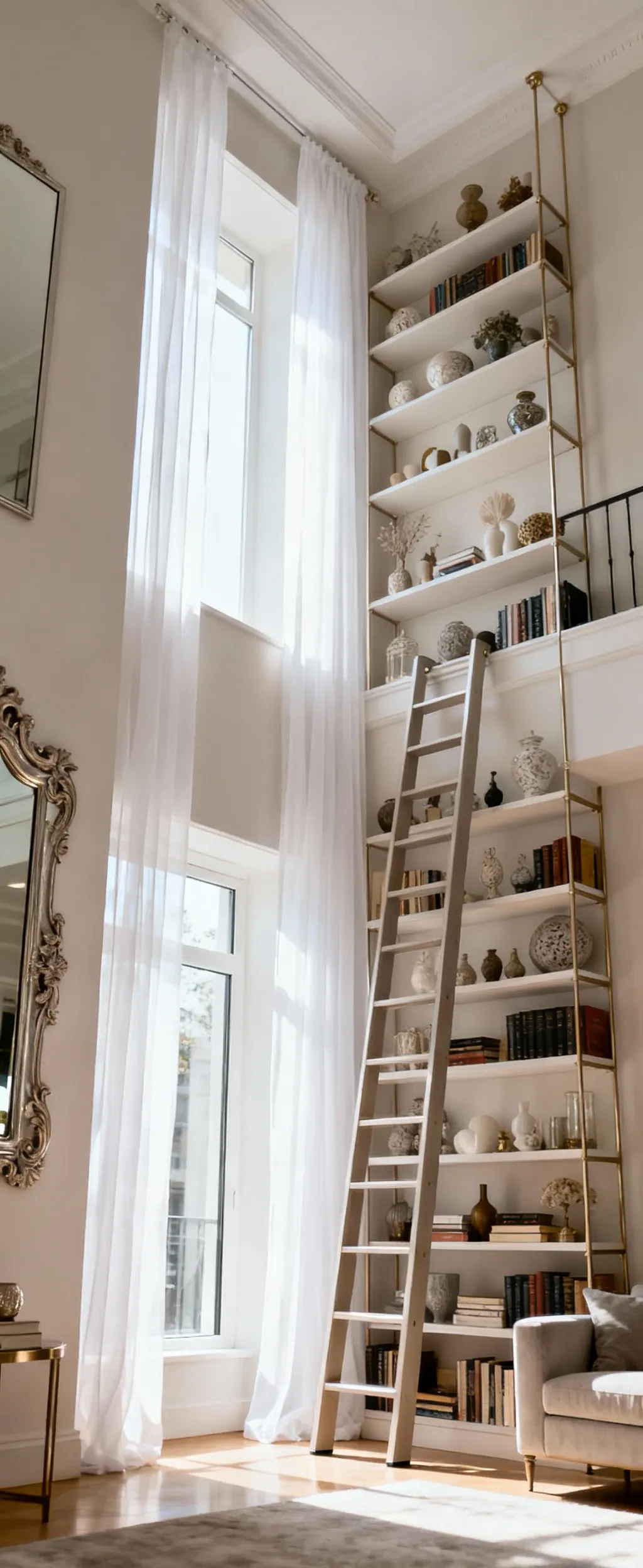
4. Curated Color Palettes for Serenity and Scale: Creating Illusions of Space
Color isn’t just decorative; it’s a powerful tool for manipulating perception. Everyone knows that light colors make a room feel bigger, but a truly strategic palette goes deeper. It’s about creating a monochromatic or analogous scheme—using different shades of the same color, or colors that are adjacent on the color wheel. This minimizes harsh visual breaks and creates a serene, flowing space where the eye can travel uninterrupted.
The key is to create depth and interest through texture, not just color. Imagine a room done in shades of bone, cream, and soft beige. You could have a linen sofa, a wool rug, a raw wood table, and plaster-finish walls. All are in the same color family, but the textural variation makes the space rich and inviting, not boring. I’ve seen this play out time and again: a limited, texture-rich palette always looks more sophisticated and spacious than one crowded with competing colors.
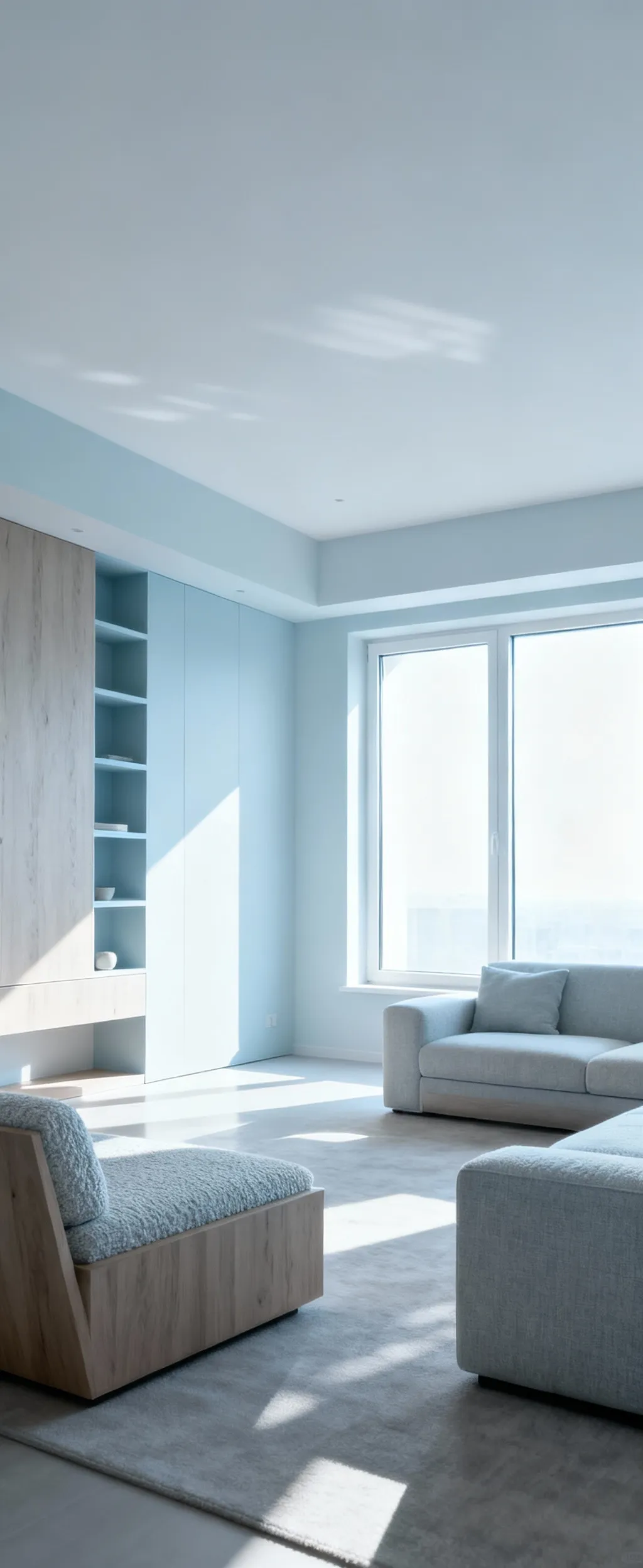
Essential Apartment Living Room Decor Fundamentals (Part 2)
With our foundational principles established, we now turn to an element that is often treated as an afterthought but is, in reality, a primary architectural tool: light. How you illuminate your space fundamentally defines its mood, function, and perceived size.
5. The Impact of Layered Lighting Design: Setting the Ambiance with Intention
A single overhead light fixture is the enemy of good design. It casts harsh shadows, flattens the room, and creates a sterile, uninviting atmosphere. Proper lighting design requires a layered approach, composed of three distinct types: ambient (overall illumination), task (for specific activities like reading), and accent (to highlight art or architectural features). Getting these three layers to work in concert is the goal.
Start by ensuring your ambient light, maybe from a central fixture or track lighting, is on a dimmer. This is non-negotiable. Then, add task lighting where you need it—a floor lamp by your favorite chair, a small table lamp on a side table. Finally, use accent lighting, like a picture light or an uplight behind a plant, to create depth and drama. I always tell my clients that light is like punctuation in a sentence; it tells you where to pause and what’s important.
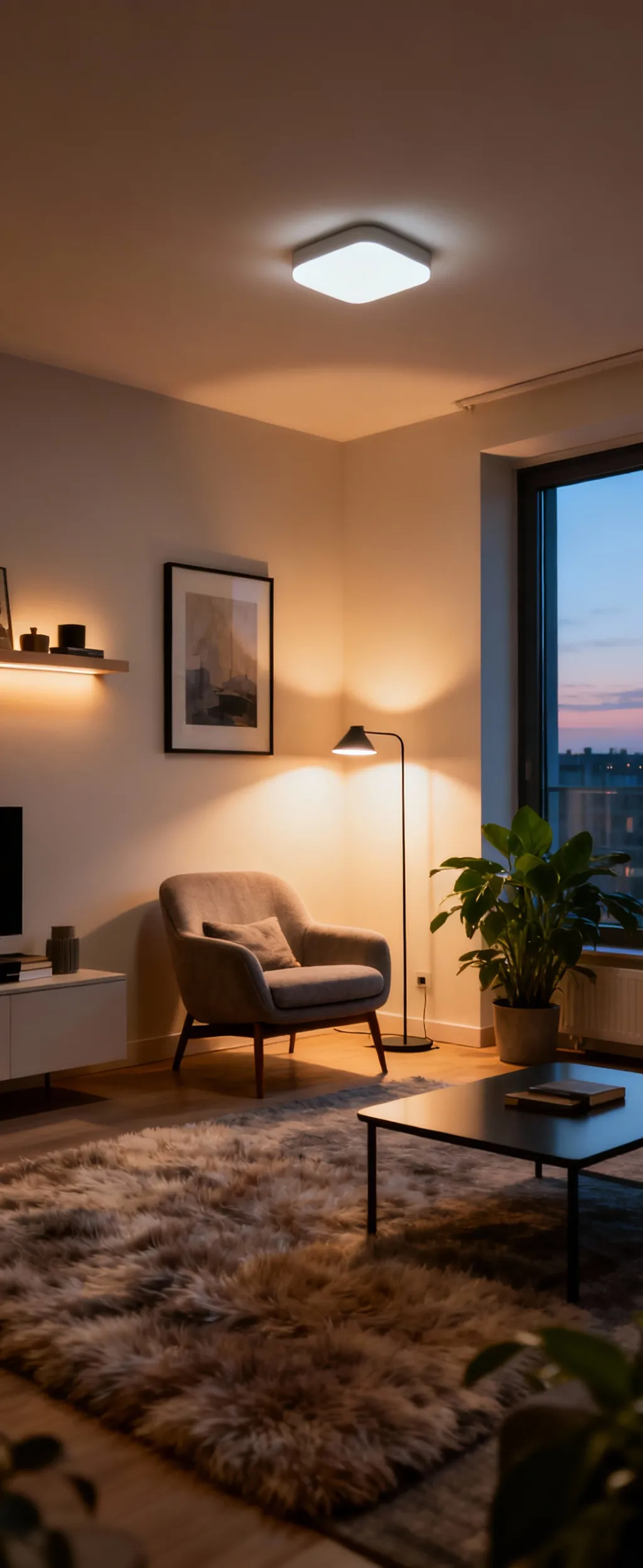
Elevating Your Apartment Living Room Decor Approach (Part 1)
Now that the essentials are in place, we can begin to layer in more nuanced strategies. This is where we refine the user experience of the room, focusing on flow, comfort, and the intelligent use of design elements to amplify the sense of space and light.
1. Optimizing Traffic Flow with Intelligent Furniture Placement: Enhancing Livability
A beautiful room that’s awkward to navigate is a failed design. The first thing I do in any space is map out the “desire lines”—the natural paths people take from the door to the sofa, to the window, to the next room. Your furniture layout must respect these paths. Aim for a minimum of 30 inches for major walkways. Anything less, and the room starts to feel cramped and frustrating.
This becomes especially important in an open-concept apartment. Use furniture to create “soft” boundaries. The back of a sofa can clearly delineate the living area from a dining space without needing a wall. I learned this when designing a client’s studio apartment: we “floated” the sofa in the middle of the room, creating a walkway behind it that led to the sleeping nook. It instantly made the space feel more intentional and organized, proving that great flow is the invisible architecture of a comfortable home.
2. The Art of Rug Selection: Defining Zones and Anchoring Your Design
A rug is not just a decorative element; it’s an architectural tool that defines the boundaries of a space. The most common mistake I see is a rug that’s too small—a “postage stamp” rug floating in the middle of the floor only makes the room look smaller and the furniture disconnected. The rule is simple: at least the front two legs of your sofa and any armchairs must be on the rug.
This immediately unifies the seating area into a cohesive, intentional zone. In an open floor plan, this is absolutely critical. Your rug essentially creates a “room within a room,” anchoring the conversation area and giving it a sense of place and purpose. In my professional experience, upgrading to a larger rug is one of the single most impactful changes you can make to your apartment living room decor. It grounds everything.
3. Incorporating Strategic Mirror Placement: Amplifying Light and Depth
Mirrors are magic, but only when used correctly. The default move is to hang a mirror to make a room look bigger, but where you hang it is everything. Placing a large mirror directly opposite a window is the best way to double your natural light and bring a sense of the outdoors in. It effectively creates a second virtual window.
Beyond light, a mirror can solve architectural problems. A long, narrow room? Place a large mirror on one of the long walls to create an illusion of width. An awkward, dark corner? A floor mirror can bounce light into it and make it feel more intentional. Just be mindful of what your mirror reflects. It should reflect something beautiful—a window, a piece of art, a chandelier—not a cluttered corner or a blank wall.
4. Customizing Storage Solutions Beyond the Built-in: Tailored Order for Clutter Control
Built-in closets are a great start, but true clutter control in an apartment requires a more customized strategy. This is where you look at your living room and identify the “clutter hotspots.” Is it the pile of mail on the side table? The stack of magazines by the sofa? The tangle of charging cables? Once you identify the problem, you find a tailored solution. That might mean a beautiful decorative box for mail, a slim console table with drawers behind the sofa, or an end table with a built-in charging station.
Years of designing organization systems have taught me one thing: storage has to be as easy as the bad habit it’s replacing. If putting your keys away requires opening three doors, you’ll just dump them on the counter. A beautiful bowl right by the door, however, works. It’s about creating systems that are both aesthetically pleasing and ruthlessly efficient.
Elevating Your Apartment Living Room Decor Approach (Part 2)
Continuing our ascent into refined design, we now look at elements that engage the senses more deeply. This is about creating an environment that doesn’t just look good but feels good—a space that actively promotes a sense of well-being.
10. Integrating Biophilic Design Elements: Bringing Nature’s Calm Indoors
Our connection to nature is primal. Biophilic design is the practice of bringing natural elements indoors to create a calmer, healthier environment. The easiest way to start is with plants. And I don’t mean one sad-looking succulent. I mean making a statement. A tall Fiddle Leaf Fig can add incredible verticality and life to a corner, while a collection of smaller plants grouped on a shelf creates a lush, curated moment.
But biophilia is more than just plants. It’s about incorporating natural materials and patterns. Think a solid wood coffee table, a jute rug, linen curtains, or a stone coaster. These elements bring a textural richness and organic warmth that man-made materials can’t replicate. What really gets me is the immediate sense of peace a space with strong biophilic elements has. It feels grounding and inherently restorative.
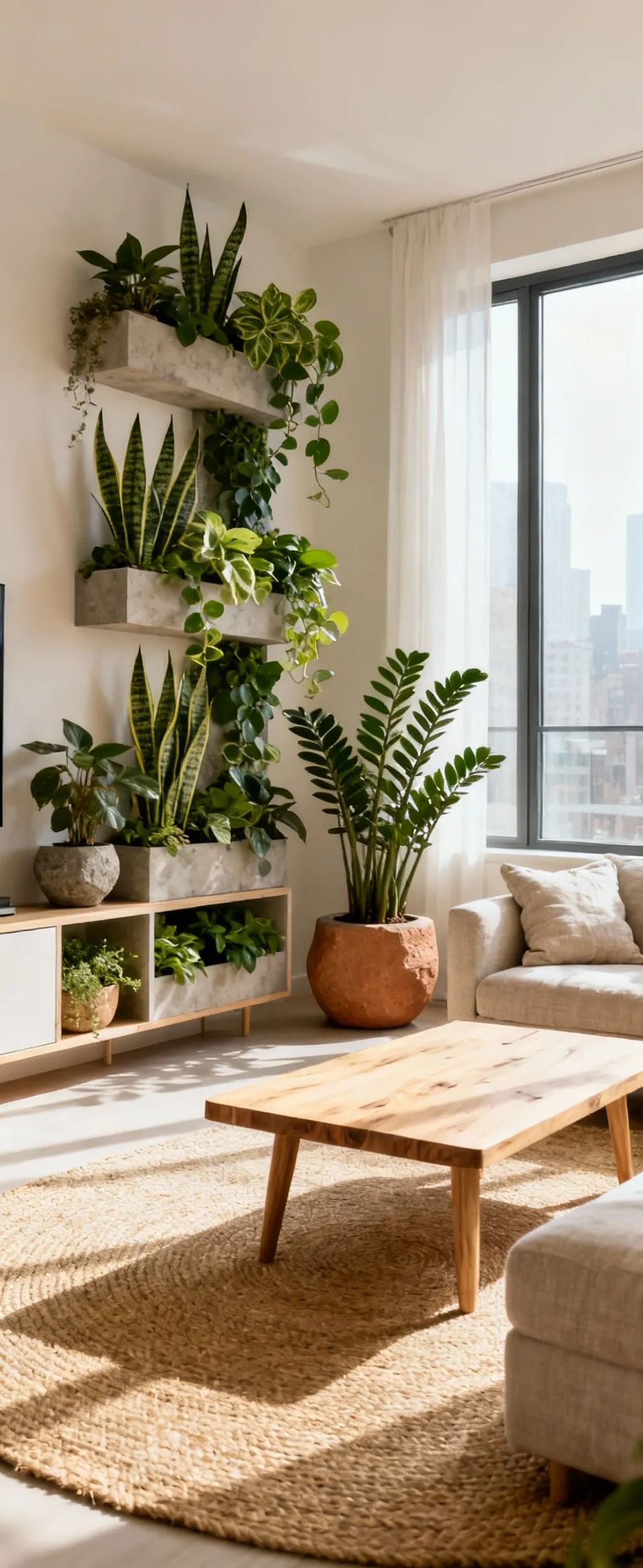
Advanced Apartment Living Room Decor Strategies (Part 1)
Here we graduate to the professional-level concepts that truly separate a well-decorated room from a masterfully designed one. These principles are more subtle, but their impact is profound, governing the visual harmony and psychological comfort of your space.
11. Deconstructing Visual Weight: Balancing Furnishings for Dynamic Symmetry
Every object in a room has “visual weight”—a measure of how much it commands your attention. A dark, solid, oversized sofa has a lot of visual weight. A glass coffee table with thin metal legs has very little. A balanced room is not one where everything is perfectly symmetrical, but one where the visual weight is distributed harmoniously.
If you have a heavy bookcase on one side of the room, you need to balance it on the other side. This doesn’t mean you need another bookcase. It could be two lighter armchairs and a floor lamp, which together have a similar visual impact. I’ve found that learning to see in terms of weight, rather than just objects, is a crucial skill. It allows you to create compositions that feel stable yet dynamic, avoiding the sense that the whole room is about to tip over to one side.
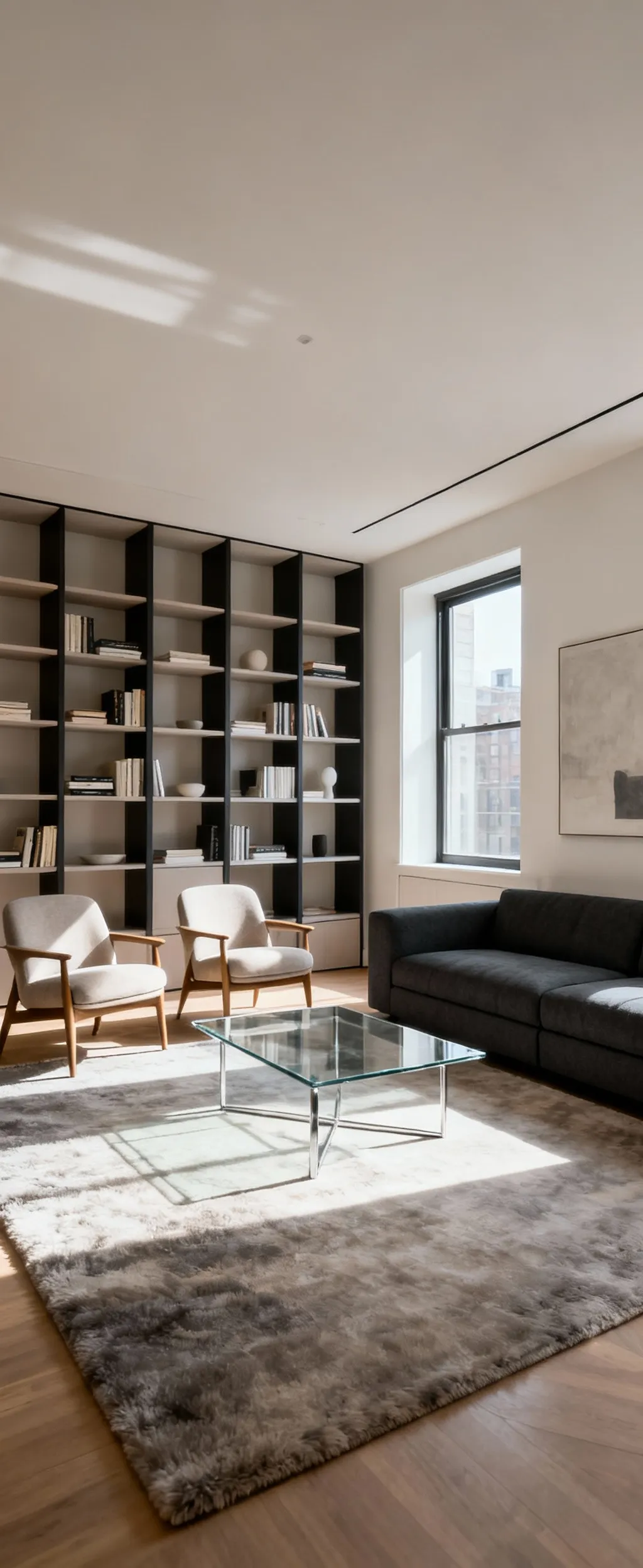
12. Crafting a Cohesive Gallery Wall: Personal Narratives as Art Installations
A gallery wall is a perfect opportunity to inject your personality into a room, but a poorly executed one just looks like clutter. The secret is to establish a unifying element. This could be consistent frames, a strict color palette within the art itself, or a common theme. But the most important step is to lay everything out on the floor first.
Arrange and rearrange the pieces on the floor until the composition feels balanced. I use craft paper cut to the size of each frame to tape a template to the wall. It lets you see the spacing and balance perfectly before you hammer a single nail. A great gallery wall tells a story and acts as a single, large-scale piece of art, turning a blank wall into the most personal and compelling feature of your apartment living room decor.
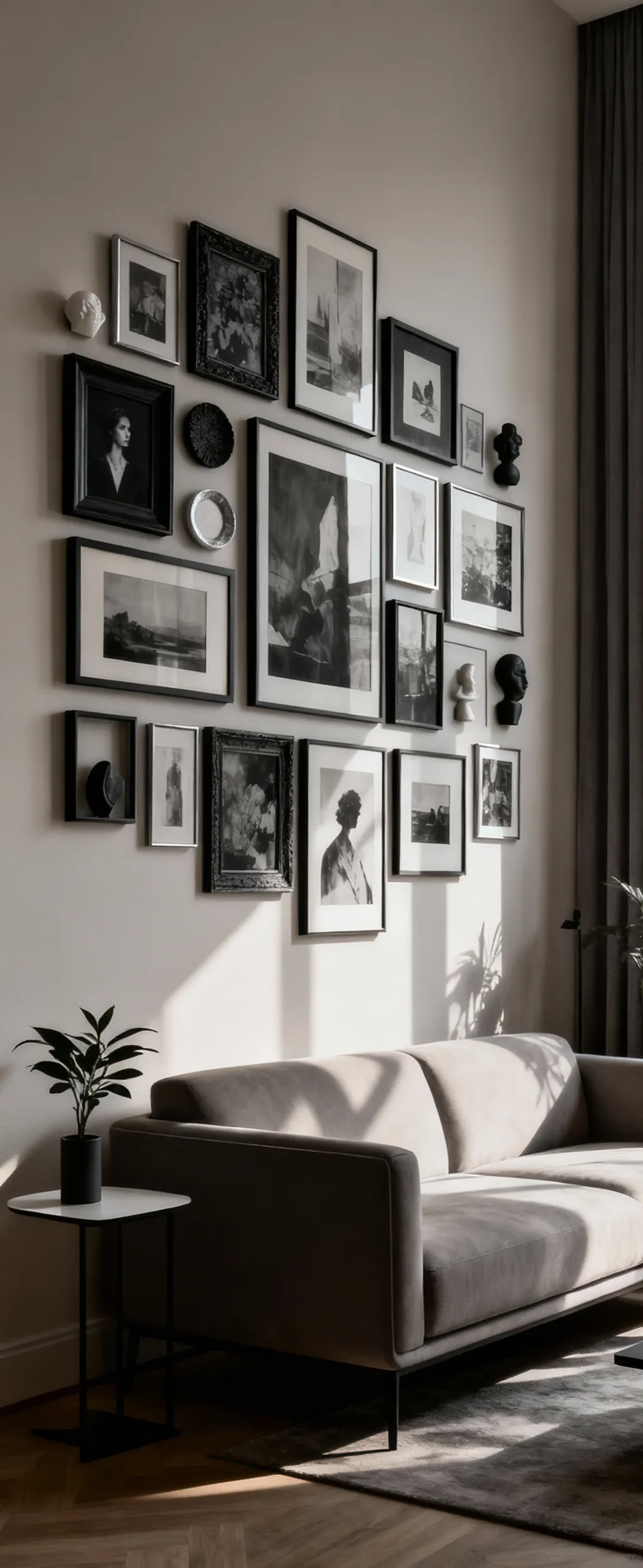
13. The Psychology of Scent and Sound: Engaging All Senses for Elevated Experience
Design is a multi-sensory experience. What a room smells and sounds like is just as important as how it looks. This isn’t just about lighting a candle; it’s about developing a “scent signature” for your home. A high-quality essential oil diffuser can provide a subtle, consistent base note—perhaps sandalwood or bergamot—that becomes associated with the feeling of being home.
Similarly, consider the acoustics of your room. Hard surfaces reflect sound, creating an echoey, harsh environment. Soft surfaces—rugs, curtains, upholstered furniture, even a wall tapestry—absorb sound, creating a calmer, more intimate atmosphere. Curating these invisible elements is an advanced technique that fundamentally elevates the experience of being in your space.
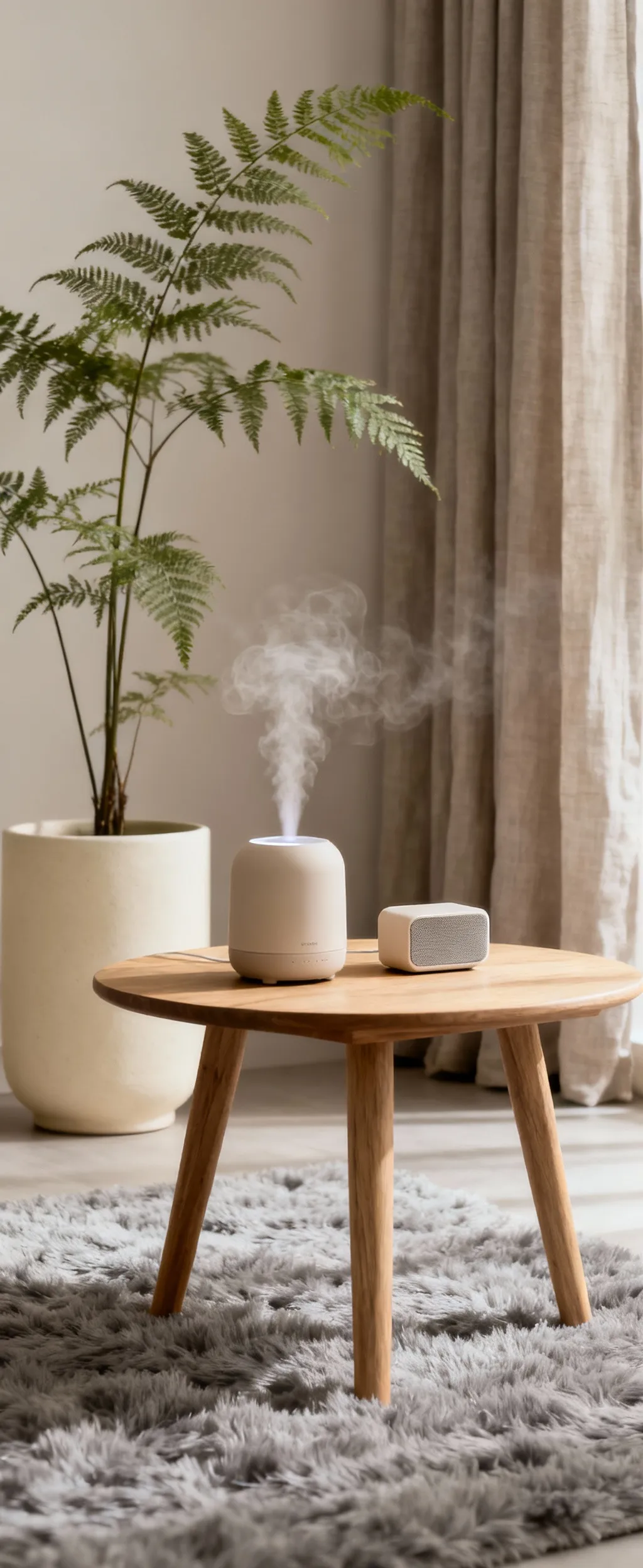
14. Employing scale and proportion Discipline: Harmonizing Disparate Elements
Scale refers to the size of an object relative to the room, while proportion refers to the size of objects relative to each other. Getting this right is critical. Your coffee table, for example, should be about two-thirds the length of your sofa and roughly the same height as the sofa cushions. Your end tables should be about the same height as the arm of the chair or sofa they sit next to.
When these relationships are correct, the room feels harmonious and settled. When they’re wrong, something feels “off,” even if you can’t quite put your finger on it. This discipline is what allows you to mix furniture from different eras and styles. As long as the scale and proportion are harmonious, the disparate elements will feel like a deliberate, eclectic collection rather than a random assortment.
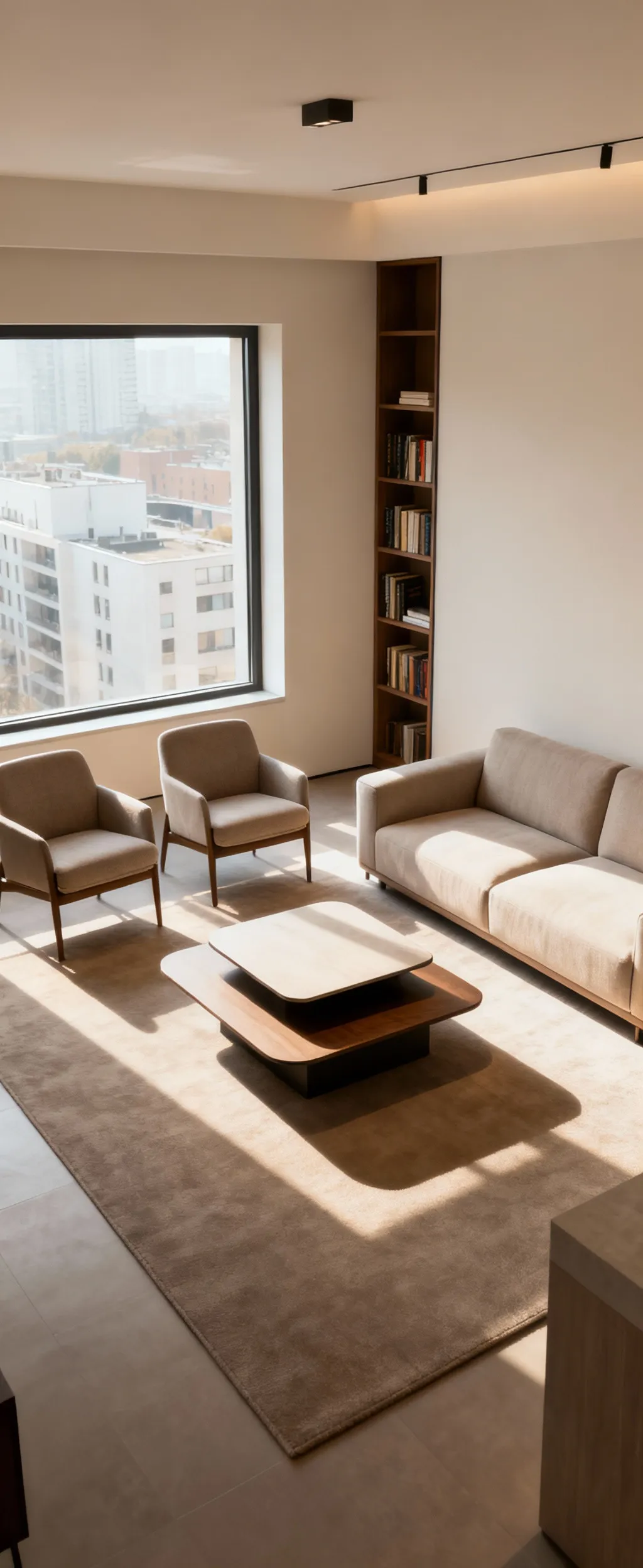
Advanced Apartment Living Room Decor Strategies (Part 2)
The final leg of our strategic journey involves embracing a mindset. Design is not a one-time event but a continuous process of refinement. This section focuses on the principle that makes a space not just well-designed, but truly lived-in and loved.
15. Strategic Decluttering as a Design Principle: The Foundational Layer of Sophistication
I want to reframe how you think about decluttering. It is not the chore you do before you design; it is the first act of design. Every single object you remove from a room gives the remaining objects more power and importance. It creates negative space, or “visual quiet,” which is the ultimate luxury in a small apartment.
My method is ruthless but effective. For everything in your living room, ask two questions: 1. Is it useful? 2. Is it beautiful? If the answer to both is no, it has to go. This isn’t about stark minimalism; it’s about intentionality. By strategically editing your possessions, you are curating your own environment, ensuring that everything you see contributes to the serene and sophisticated atmosphere you want to create. This is the single most powerful, cost-free tool in your design arsenal.
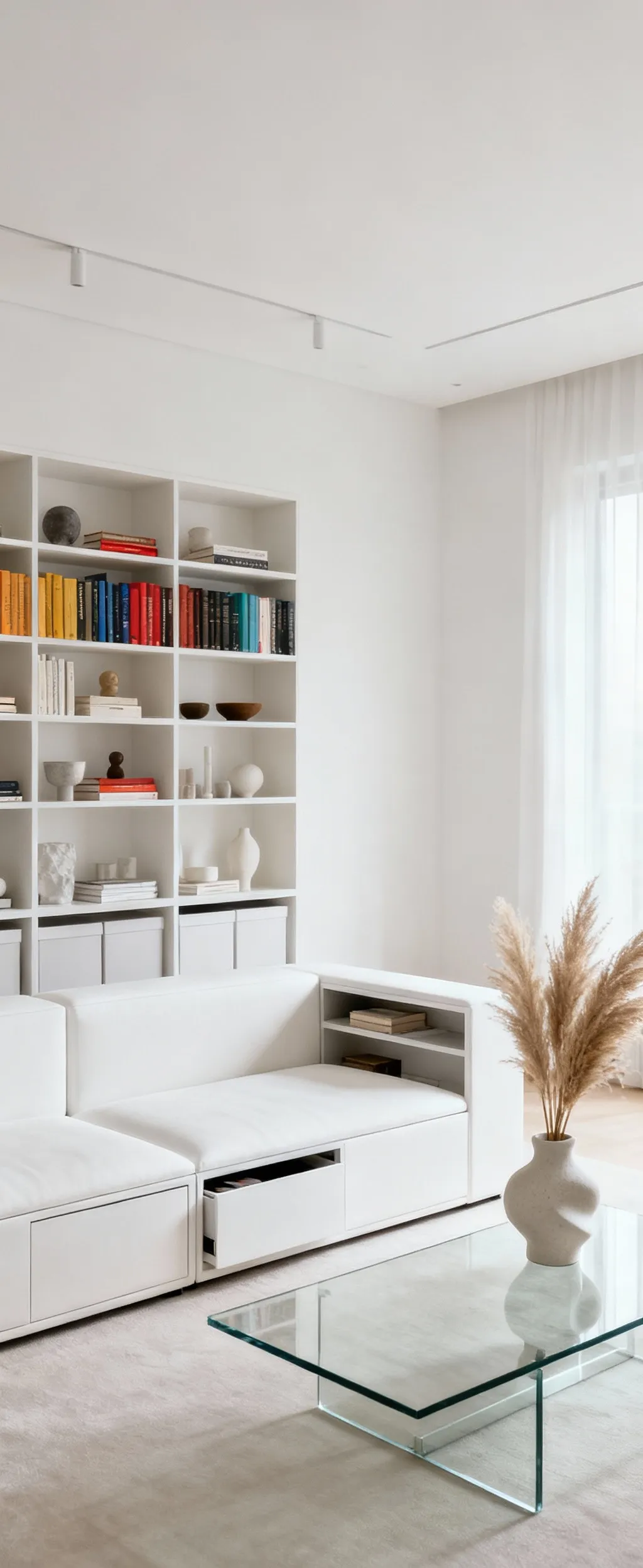
Mastering Apartment Living Room Decor Integration (Part 1)
Mastery is about synthesis—bringing all the individual strategies together into a fluid, responsive system. This is where your living room becomes more than a collection of well-chosen items; it becomes a dynamic reflection of your life, ready to adapt and evolve with you.
16. Future-Proofing with Flexible Design Elements: Adapting to Evolving Lifestyles
Your life isn’t static, so why should your living room be? Future-proofing your design means choosing pieces that can adapt to changing needs. Modular sofas that can be reconfigured are a brilliant investment. A set of nesting tables is far more versatile than a single large coffee table. Furniture on casters can be easily moved to accommodate guests or a new layout.
In my work, I design for flexibility. This might mean including adjustable shelves in a bookcase or designing a media unit that can accommodate future technology. For your apartment, it means thinking about the next five years. Will you be working from home more? Will you need space for a child to play? Choosing flexible, high-quality core pieces allows you to adapt to these changes with minor tweaks rather than a complete overhaul.
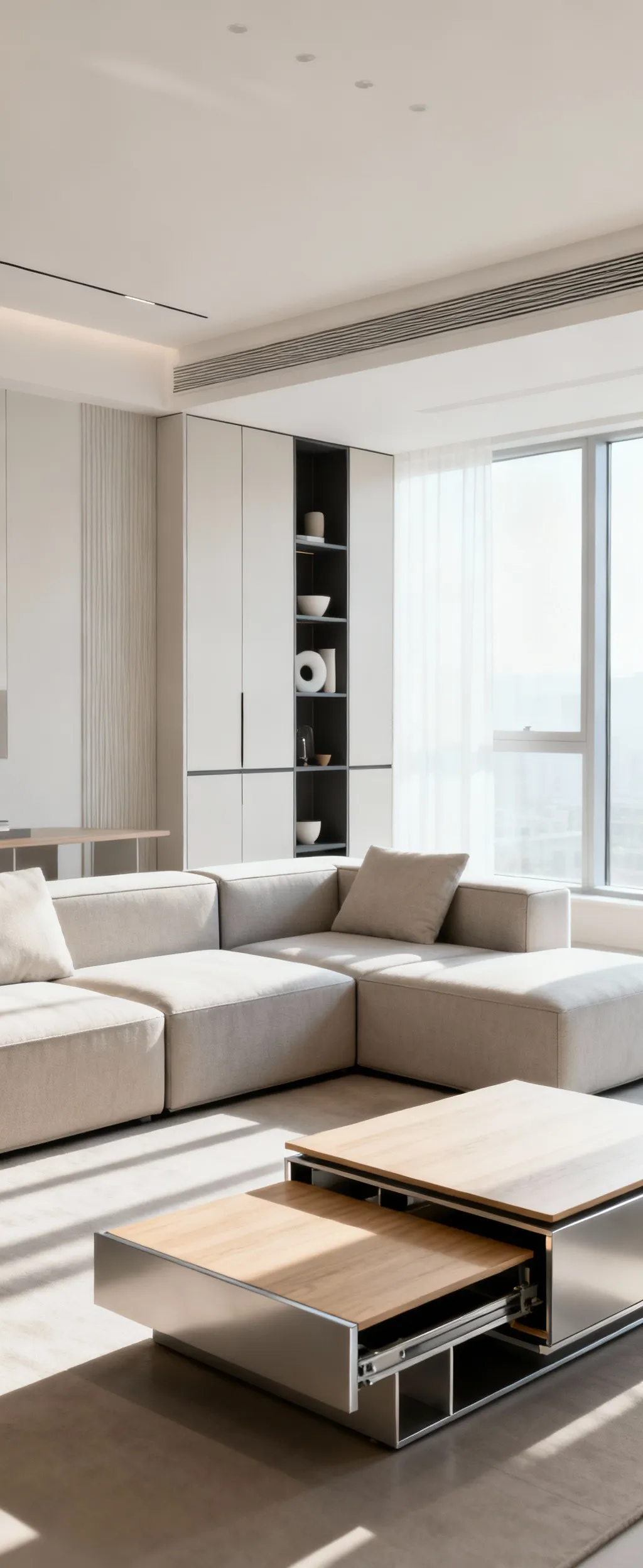
17. Curating Collections with Intentionality: Personal Expression Through Thoughtful Display
Collections—of books, pottery, records, travel mementos—tell your story. But a display without curation is just clutter. The key is to group like items together to give them more impact. Instead of scattering small objects around the room, gather them into a “vignette” on a bookshelf or console table. Use the rule of odds (grouping in threes or fives) and vary the height and texture for visual interest.
Don’t be afraid to edit your collection. Not everything you own needs to be on display at once. Rotate items seasonally to keep the look fresh. I once helped a client who collected beautiful ceramic bowls. We installed three long, narrow floating shelves and arranged the bowls by color. It transformed them from a cluttered cabinet collection into a stunning, museum-quality art installation that was deeply personal to her.
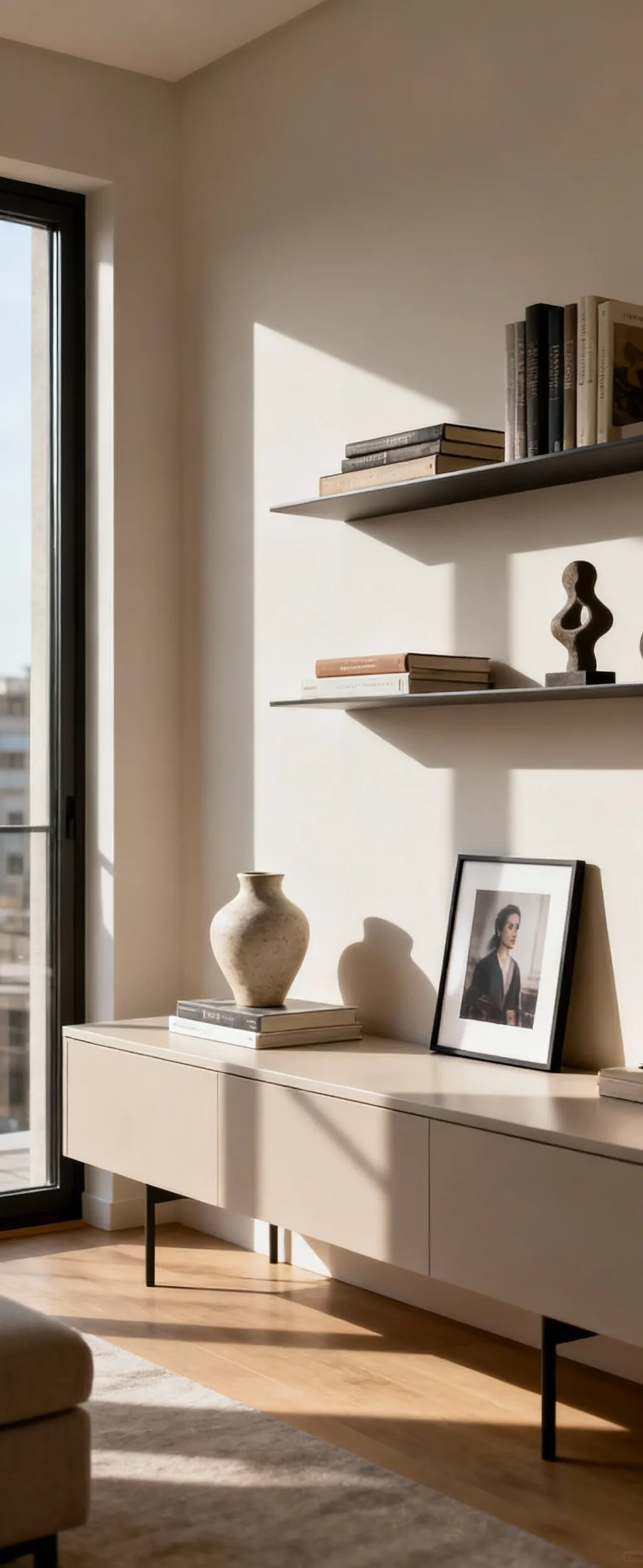
18. Implementing Smart Home Technology Invisibly: Seamless Functionality Through Integration
The most sophisticated technology is the technology you don’t see. The goal is to integrate smart home functionality without the visual clutter of wires, hubs, and gadgets. Smart bulbs can be installed in your existing fixtures. A slim soundbar can provide excellent audio without the need for bulky speakers. Wireless charging pads can even be built directly into the surface of an end table.
This requires planning. Think about where your outlets are and how you can manage cables effectively. Cord-hiding conduits can be painted to match your wall, making them nearly disappear. The aim is for the technology to feel like a seamless, integrated part of the environment, enhancing your life without visually detracting from the carefully curated apartment living room decor you’ve worked so hard to achieve.
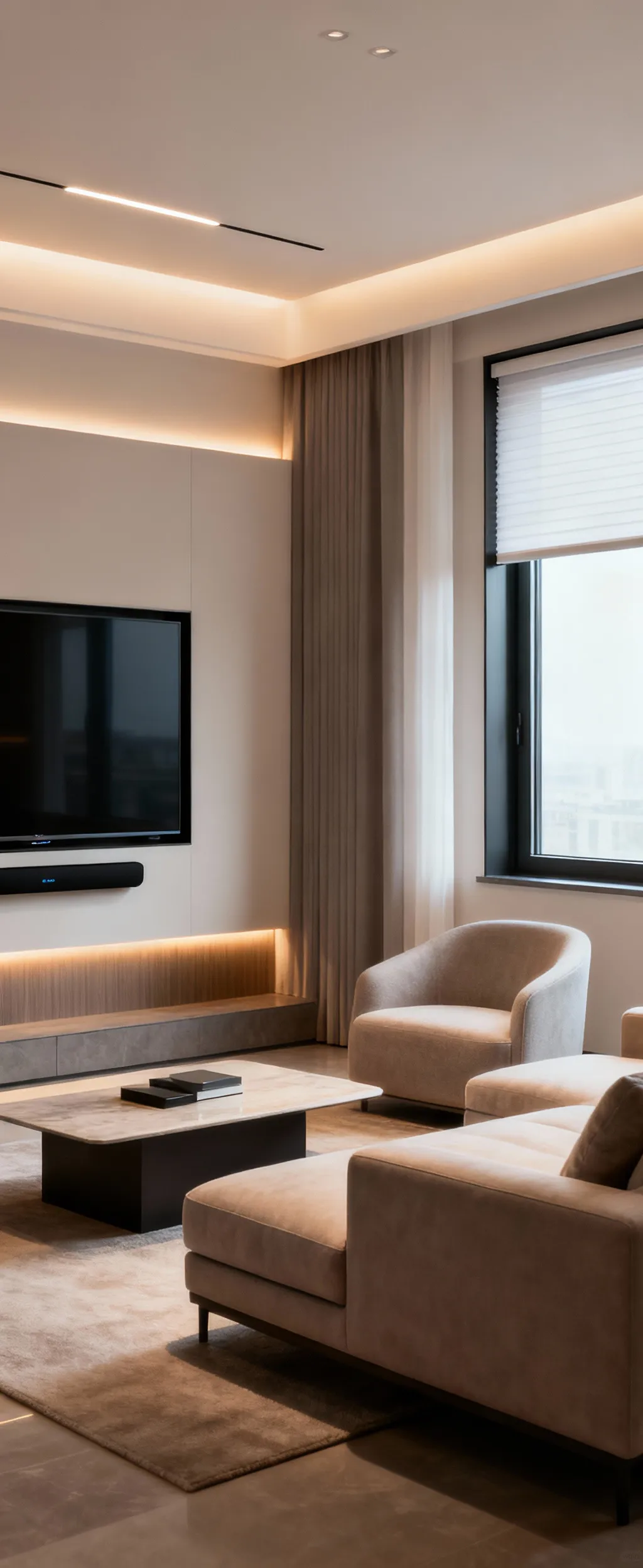
19. The Iterative Design Process: Refining Your Space Through Deliberate Evolution
A room is never truly “finished.” The most beautiful homes evolve over time as the people who live in them change. Embrace an iterative design process. Live in your space and pay attention to what’s working and what isn’t. Is that armchair ever used? Is the rug constantly getting tripped on? Be willing to tweak, adjust, and refine.
Take photos of your living room every six months. This allows you to look at it with a more objective eye and see how it has changed. I learned this when I realized the “temporary” storage box in my own living room had been there for a year. The photo made it obvious that I needed a permanent, more elegant solution. This process of gentle, deliberate evolution is what makes a space feel truly authentic and lived-in.
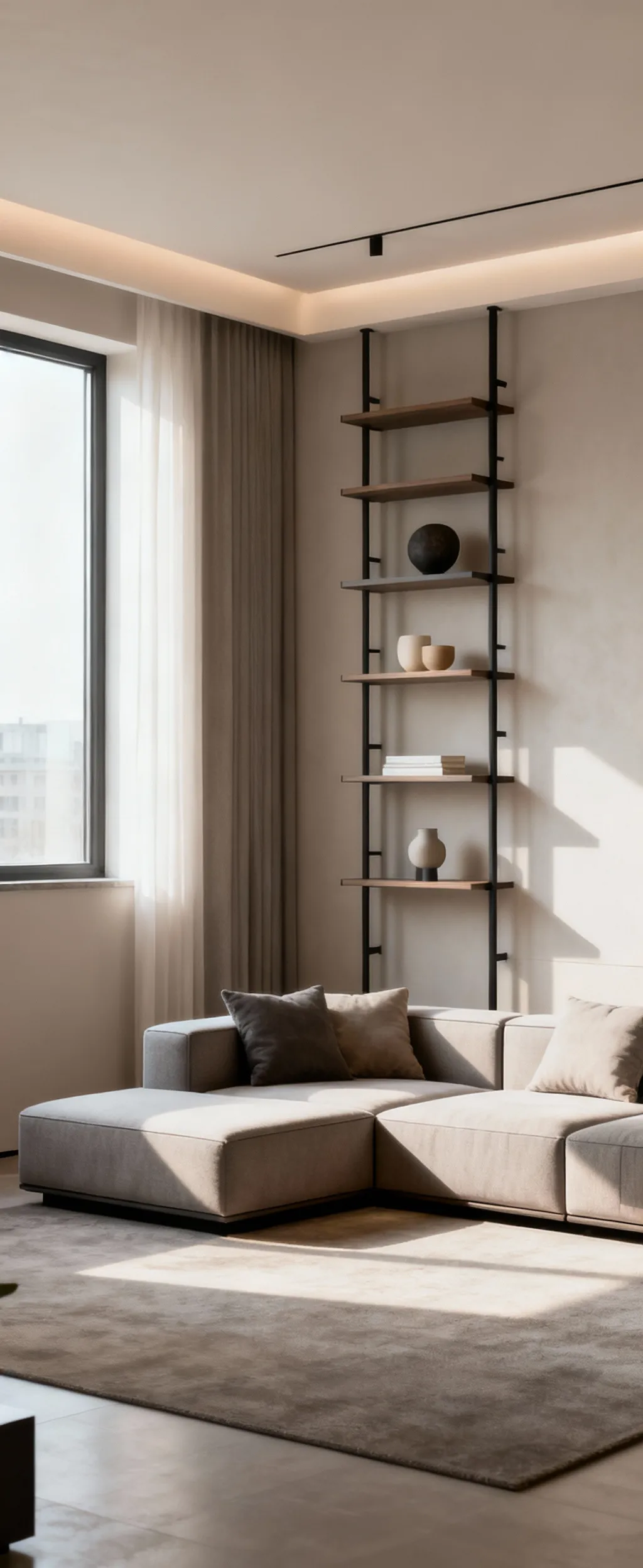
Mastering Apartment Living Room Decor Integration (Part 2)
The final and most crucial element of mastery is you. A technically perfect room that feels impersonal is a failure. This last step is about ensuring that your unique spirit is the most prominent feature of your living room.
20. Establishing a Personal Style Signature: Authenticity as the Ultimate Design Statement
After all the rules, strategies, and systems, this is the one that matters most. Your home should look and feel like you. Take some time to analyze what you’re naturally drawn to. Look at your wardrobe, your favorite art, the places you love to visit. Are there recurring colors, textures, or moods? This is the raw material for your personal style signature.
Once you understand it, have the confidence to commit to it. If you love bold, saturated colors, don’t feel pressured to create a neutral, minimalist space. If you are drawn to ornate, antique pieces, don’t force yourself to live with stark modern lines. My role as a designer isn’t to impose my style on you; it’s to give you a system to execute your own style flawlessly. An authentic space, even if it breaks a few “rules,” will always be more compelling than a perfectly designed but soulless room.
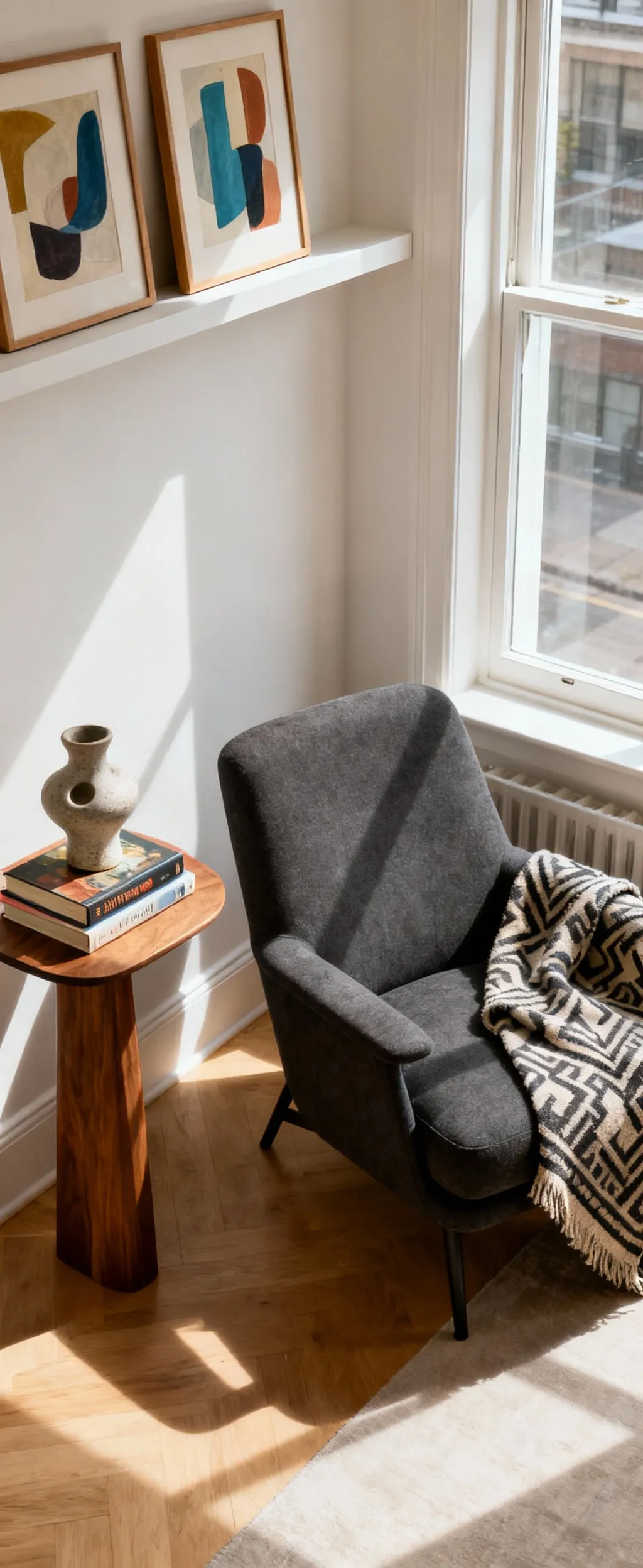
Conclusion
We’ve journeyed through 20 methodical strategies, moving from the essential bedrock of apartment living room decor to the nuanced integrations that signal true design mastery. The core principle that binds them all is this: an organized, systematic approach is not the enemy of creativity, but its greatest enabler. By creating a functional framework, you give yourself the freedom to build a space that is not only beautiful but profoundly supportive of your daily life.
As a designer who finds deep satisfaction in creating order, I hope this guide has demystified the process. Great design isn’t magic; it’s a series of intelligent, intentional decisions. Now it is your turn to apply this systematic creativity to your own home. Use these strategies not as a rigid rulebook, but as a professional toolkit to transform your apartment living room into a sanctuary of calm, function, and authentic personal style. Build the space you deserve—one that is a true and refined respite from the world.
